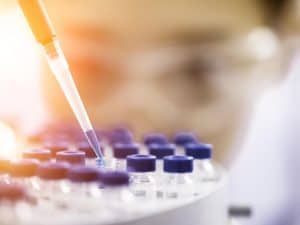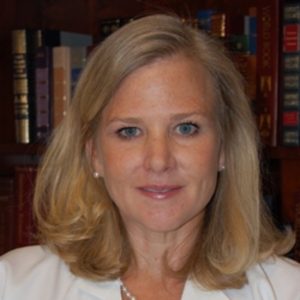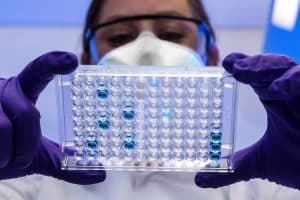
Patient experience: Living with ovarian cancer
pharmafile | April 3, 2018 | Feature | Business Services, Manufacturing and Production, Medical Communications, Research and Development, Sales and Marketing | Cancer, Ingrid Copperman, feature, ovarian cancer, patient experience, pharma
Ingrid Copperman recounts the many ways she has dealt with her diagnosis, as well as how the power of social media can prove invaluable for patients, families and friends.
Can you give me a brief history of your diagnosis?
In March 2016, I had been experiencing this mild abdominal discomfort, and I knew it wasn’t normal – it had been there for three or four weeks. As well as that, I’d had quite a bit of spotting, but I didn’t know if that was something to do with the contraception that I’d been using. When I went to see the doctor, I actually said to him “I think I’m presenting the symptoms of ovarian cancer.” He felt my stomach and said it could be something, or it could be nothing – we’ll refer you to a gynaecologist.
I went to see the gynaecologist a week later, and she gave me an ultrasound and said: “There’s a little cyst on your ovary, but I can’t see much – I think it might be irritable bowel syndrome”, and gave me some medication for that, and at the same time sent me for a load of bloods to be tested. I went away, didn’t think anything of it, started taking the IBS medication, and actually everything calmed down.
At the beginning of April 2016, I got a call saying that one of my bloods was raised, and while it was probably nothing, they wanted a scan. I asked which blood it was, and was told that it was CA125. That meant nothing to me, but, of course, I went away and googled it, and there facing me in black and white was: “This is a marker for ovarian cancer.” At that point I freaked.
I was able to have the CT scan the following day. The results came back inconclusive. I had an MRI, and the radiographer came back and said there was nothing to show. So, the gynaecologist said let’s just do your CA125 again, it might just have been a blip. That came back even more raised. The first result was 75, and the second time it was 275; the normal range is 0-35, so something clearly wasn’t right.
At the beginning of June, I got a call to say that they had found a cyst on my right ovary, which had attached itself to my womb, and that they were diagnosing that as a borderline ovarian cyst, which only had a 10% chance of malignancy. It was a good prognosis, but the recommendation was for cancer surgery.
My son was going through his A-levels at the time, so I didn’t want to disrupt them. I had the operation the day after he finished them – I had a full abdominal hysterectomy with bilateral salpingo-oophorectomy – basically, everything taken out. That evening, the surgeon said that they had found disease in my womb, fallopian tubes – basically everywhere, but it was still contained within my abdominal cavity. The shock was that none of that had shown up on the scan.
Two weeks later, I went back and they told me the cancer had gone into the lymph nodes, so it was then diagnosed as stage 3 high-grade serous ovarian cancer. The surgeon was very confident he had removed everything, but he said just to be on the safe side to have a course of chemotherapy. I started in August 2016 with weekly Taxol and three-weekly carboplatin. That took me through to the beginning of December, by which point my CA125 had come down to 25. Just before Christmas 2016, they scanned me and I was given the all-clear. I went into Christmas and the start of 2017 cancer-free, but I knew there was always a good chance it could come back.
How have things been since then?
After that, I was monitored every three months; I had a blood test in March and the CA125 had risen to something like 40. I had another scan and, yes, it had recurred but was still within the abdominal cavity. So, I had chemotherapy from March to July, and then another scan – again, no evidence of disease, the chemo had done its job. I skipped off and started enjoying life again.
In October 2017, I had another routine blood test, and my CA125 had risen, so it was clear that the chemo had worked initially, but the effects had worn off. I had a scan in November and that did show recurrence, but my oncologist said it’s only very tiny and she put me on tamoxifen. I was on that for two months, and in January I had a blood test, and my CA125 had risen again. The tamoxifen hadn’t worked, and I’m currently on my third round of chemotherapy.
Have you had a strong support network throughout the diagnosis?
Absolutely. My partner and I have been together for five years. As soon as I got the diagnosis, I asked him whether he’d move in to look after me while I recuperated. He gave up his rented flat and moved in, and he’s been fantastic support, especially as my youngest son went off to university in October 2016. My oldest son then moved out in March 2017 – they were at the age where I didn’t have to worry about them, I could concentrate on the treatment. My mum, my sister, my friends have all been brilliant.
I’m Jewish, and the other people who’ve been very supportive is an organisation called Chai who provide fantastic support in terms of counselling, complementary therapies, activities, talks and information. I tap into them from time to time as well.
How did you respond to treatment?
They’ve been fantastic in giving me anti-emetic drugs and finding the right combination that alleviates the nausea. I still have some, but I haven’t had any physical sickness, thankfully. Paclitaxel is normally a hair loss drug, but during that treatment I wore a cold cap and managed to keep my hair, which is fantastic. I had all sorts of other side-effects like mouth ulcers, a funny taste in my mouth and a very acute sense of smell. At one point I got a very scabby scalp, it was very sore – that was really quite nasty. I’ve had no skin reactions to date, the main side-effects have been nausea and being incredibly tired.
You’ve kept a blog throughout your time with your condition – how has that helped?
Ideally, I’d love to go viral and have millions of followers and raise awareness about ovarian cancer and cancer in general. It’s partly a therapeutic thing that I’m able to just release what I’m feeling and not keep it in. Another thing is that it’s a record of what I’ve been through to look back on. Also, it’s a really good way of letting everyone know every time something happens. I have a Facebook page connected to that, so I can put an update rather than phoning or emailing or texting, and it saves people having to ring me to ask how I’m doing.
You have worked with Cancer52, which you have said really attuned you to the signs to watch out for with your own diagnosis. Have you always been passionate about helping those with cancer?
Yes, I lost my father to testicular cancer when I was six years old – he was just 29. That was really tragic, but it was 1974, they didn’t know about the disease like they do nowadays. I had this opportunity to work with Cancer52, an organisation campaigning for rare and less common cancers. And bizarrely, I then had my own less common cancer diagnosis. It makes it even more meaningful – it’s not just a job, it’s a passion.
Your BRCA1 genetic mutation was found to be a “variation of unknown significance”. How did this affect your diagnosis?
Basically, it’s in the BRCA1 ‘area’, but it’s a particular strain that they have never seen before. If it was one that they knew about, they would monitor me for breast cancer, because my risk is now 50%. They would also offer my mum and sister, and any other female relatives, genetic testing as well. Because it’s of unknown significance, they’ve retracted all of that, which I’m a bit aggrieved about – it’s unknown significance, it’s not no significance. That’s another battle I’m going to have at some point.
What advice would you give to others who could face similar diagnoses?
If you ever notice something that’s different or not right with your body, the tendency is to sit on it and not face up to the fact that it could be something, but go to the doctor. Don’t wait, because early diagnosis is key to better outcomes. Also, have a test to see if you have a genetic mutation, so you can take preventative measures if you do, rather than waiting and having to endure treatment.
You can visit Ingrid’s blog to keep up with her journey at www.princessandthec.com
Related Content

Pharma&’s ovarian cancer therapy approved for use by NHS Scotland
Pharma& has announced that its treatment for ovarian cancer, Rubraca (rucaparib), has been accepted by …

LGC Group opens $100M Organic Chemistry Synthesis Centre of Excellence
LGC Group, a life sciences company, has opened its new Organic Chemistry Synthesis Centre of …

Central nervous system cancer metastases – the evolution of diagnostics and treatment
The current forms of immunotherapy, how T cell therapy works and what the future holds






